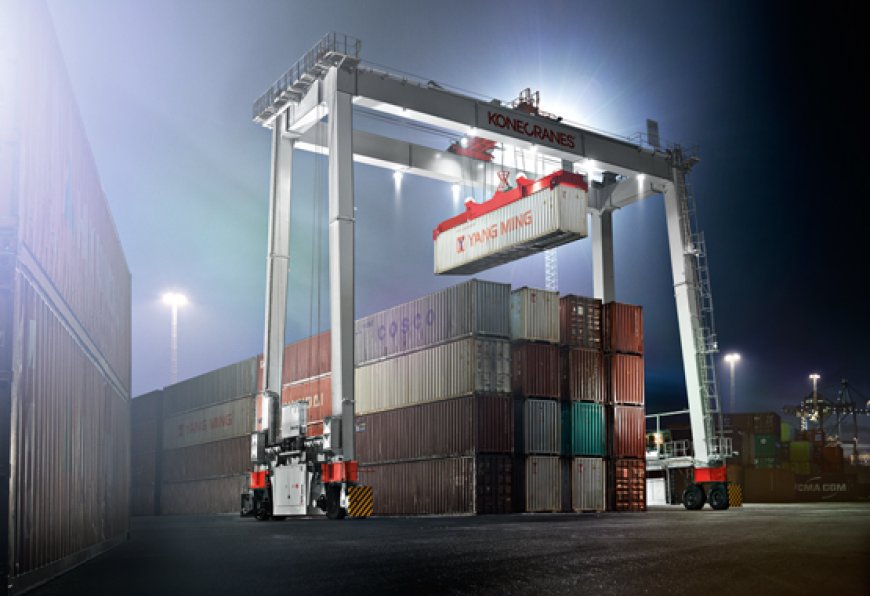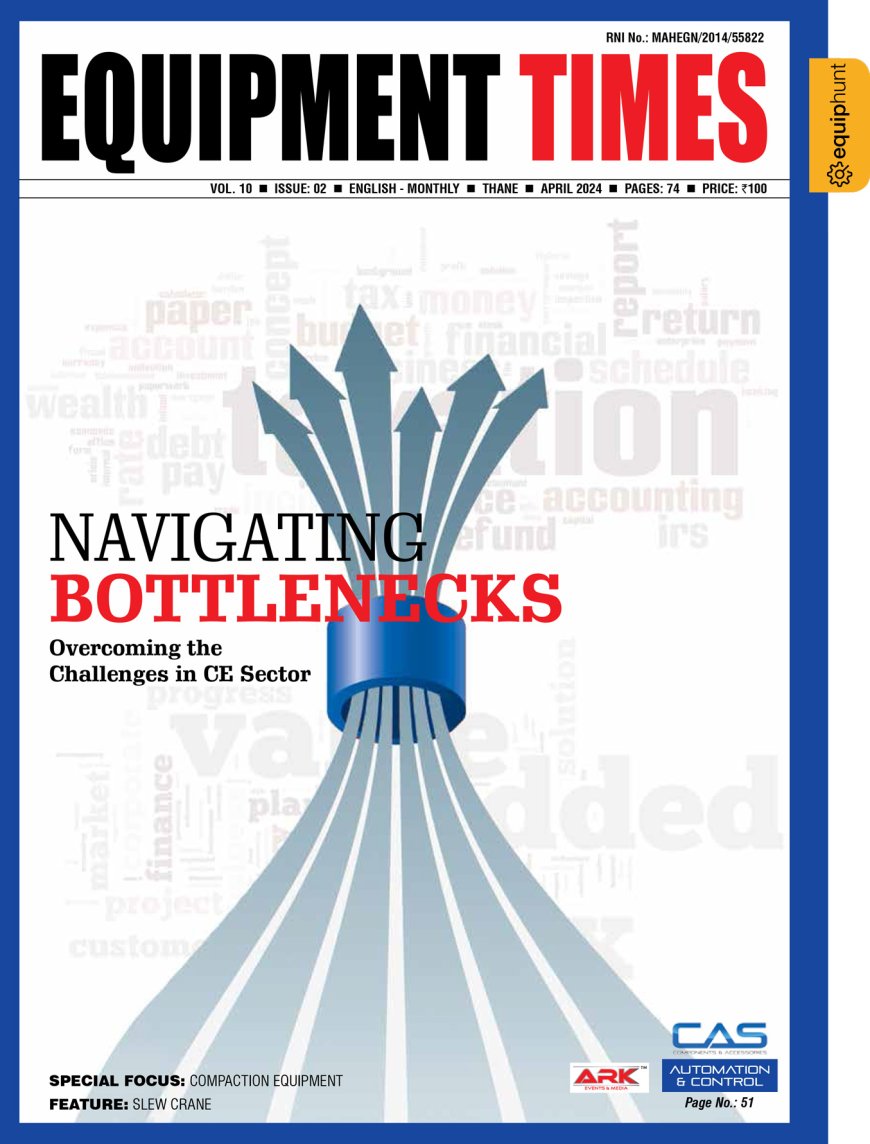Port of Call
The newly proposed initiatives in the port sector to attract investment and facilitating fast tracking of the stalled projects, together with the GST-rejuvenated logistics sector is expected to drive the demand for port equipment. Recent statistics from the Economic Survey

The newly proposed initiatives in the port sector to attract investment and facilitating fast tracking of the stalled projects, together with the GST-rejuvenated logistics sector is expected to drive the demand for port equipment.
Recent statistics from the Economic Survey tabled by the Finance Minister Arun Jaitely in Parliament tell you the story. 131 port capacity expansion projects with project cost of Rs 85,346 crore have been identified for implementation over next 20 years under Sagarmala ports master plan; whereas the Survey has also forecasted a CAGR growth of 10.5 per cent for Indian logistics market, which is expected to reach about USD 215 billion in 2020. That is a shot in the arm for the equipment players, in the long term.
 Reforms Advantage
Reforms Advantage
Stepping up its reform pace, the government of India has issued a new set of bidding guidelines for public-private-partnership (PPP) contracts at major or public ports which includes a change in the revenue model and the creation of a dispute-resolution mechanism. The revised rules are broadly modelled on the bidding approach used for PPP projects in the highway sector facilitating an easier exit route for concessionaires and a market-driven rate regime that could place operators at major ports on a level playing field with rivals at minor ports.
The proposed initiatives are expected to help address investor concerns surrounding the existing model concession agreement (MCA). As per reports the changes are seen as imperative to refuelling private participation in the port sector, which has drawn meagre investor interest in recent years. The cabinet has appointed a committee under the chairmanship of finance minister Arun Jaitley to examine whether the new MCA can be applied to the 12 stalled port projects with an estimated project cost of Rs20,000 crore. The new MCA will be applicable for new projects conceived under the shipping ministry’s ambitious Rs 8 trillion Sagarmala programme. Under Sagarmala, the government plans to construct new ports and 142 cargo terminals at major ports to harness the country’s 7,157km coastline.
Cargo Traffic – Market Trends
Cargo traffic handled by India’s major ports increased 3.26 per cent year-on-year to 273.96 million tonnes (MT) during April-August 2017. In terms of composition of cargo traffic, iron ore traffic volume rose 29.32 per cent to 18.73 MT, petroleum oil and lubricants rose 8.36 per cent to 93.14 MT, and container traffic rose 6.44 per cent.
During 2016-17, major and non-major ports in India have accomplished a total cargo throughput of 1,133.09 million tonnes, an increase of 5.7 per cent previous year 2015-16. The growth in cargo handled at major and non-major ports in 2016-17, were 6.8 per cent and 4.2 per cent, respectively. The share of major ports in the total traffic handled by Indian ports increased from 56.5 per cent in 2015-16 to 57.2 per cent in 2016-17.
The country’s major ports handled a combined traffic volume of 647.76 million tonnes during 2016-17, registering an annual growth rate of 6.80 per cent. The major ports recorded the highest ever capacity addition of 100.37 MT in 2016-17, thereby raising the total capacity to 1065 MT per annum, as against a capacity of 965.36 MT per annum in 2015-16.
The government has taken several measures to improve operational efficiency through mechanisation, deepening the draft and speedy evacuations.
Investment Scenario
The Department of Industrial Policy and Promotion (DIPP), Ministry of Commerce and Industry, reported that the Indian ports sector received FDI worth US$ 1.64 billion between April 2000 and March 2017. The Indian Minister for Shipping, Road Transport and Highways, Nitin Gadkari, announced a massive investment in India’s ports and roads sector, which is likely to help boost the country’s economy. The Indian government plans to develop 10 coastal economic regions as part of plans to revive the country’s Sagarmala (string of ports) project.
The zones would be converted into manufacturing hubs, supported by port modernisation projects, and could span 300–500 km of the coastline. The government is also looking to develop the inland waterway sector as an alternative to road and rail routes to transport goods to the nation’s ports and hopes to attract private investment in the sector.
Opportunities Galore
All existing ports are already in the process of modernization and ordering sate of the art advanced material handling equipment like harbour mobile cranes, container handling cranes, floating cranes etc. The focus of the government for development of coastal shipping , Inland waterways transport as well as reviving ship building industry would surely increase the demand of maritime cranes. These initiatives will also up the demand for port equipment like reach stackers RTGs, ECH, STS etc.
“India’s port sector is certainly in its best growth phase right now. Containerized trade recorded the highest growth last year, reaching as much as 10% in Q3 of 2017 as against a CAGR of 4% from 2007 – 2017. The government’s investment plans in ports sector are also very aggressive – including 10 coastal economic regions as part of the development plans, along with the ambitious Sagarmala project. These zones would be converted into manufacturing hubs and could span 300–500 km of coastline. The government is also looking to develop the inland waterway sector with the help of private investment – as an alternative to roads and railway routes, to connect the nation’s ports with its hinterlands,” states Anil Bhatia, Vice President – Sales & Marketing, TIL.
Expected increase in containerisation, new ICDs and CFSs, expansion plans of major and medium sized ports will also push the demand for port equipment. “Port is a high value customer for industrial trucks business. The latest development and policy upgradation are creating investment friendly environment for port industry and we will see much more investments in the port segment in coming years. Spending on modern infrastructure with a focus on increased efficiency leads to increased demand for industrial trucks and warehousing equipment. Our specific equipment (forklift) designed to cater the requirement of port segment will definitely get a boost due to increasing demand of port segment,” avers Sunil K Gupta CEO & MD – KION India.
Warehousing sector in India is at a nascent stage currently, as a large quantity of materials is still non-palletized, requiring large storage area. Any material which is not palletized cannot be either stored effectively in a rack or handled using a material handling equipment. So it is important that the materials need to be palletized and effectively stored in racks which saves a lot of space and enable easy handling with equipment. The total market size of warehousing equipment in India is about 10,000 machines per year, which is very small compared to the size and population of our country. However, the sector in India is evolving very fast and moving towards palletized loads which can be stored at heights,” explains Manojit Acharya, Managing Director, Jugheninrich Lift Trucks India.
According to Bhatia India presents a growing market for port and container handling equipment like reachstackers. He says, “With increasing containerization, development of dedicated logistics parks for handling containerized cargo and the growing thrust on developing container terminals along the east and west coasts of India, it is expected that significant new opportunities will open up for our reachstackers, which we offer in alliance with our global technology partner, Hyster®.
Moving Ahead
India’s cargo traffic handled by ports is expected to reach 1,695 million metric tonnes by 2021-22, as against 643 million in 2014-15, according to a report of the National Transport Development Policy Committee. Within the ports sector, projects worth an investment of US$ 10 billion have been identified and will be awarded over the coming five years.
Increasing investments and cargo traffic point towards a healthy outlook for the Indian ports sector. Providers of services such as operation and maintenance (O&M), pilotage and harbouring and marine assets such as barges and dredgers are benefiting from these investments.
The capacity addition at ports is expected to grow at a CAGR of 5-6 per cent till 2022, thereby adding 275-325 MT of capacity. Under the Sagarmala Programme, the government has envisioned a total of 189 projects for modernisation of ports involving an investment of Rs 1.42 trillion (US$ 22 billion by the year 2035. Ministry of Shipping has set a target capacity of over 3,130 MMT by 2020, which would be driven by participation from the private sector. Non-major ports are expected to generate over 50 per cent of this capacity.
All these initiatives are expected to energize the port sector and boost the growth demand of port equipment.
Hits: 43














